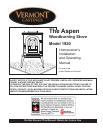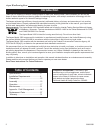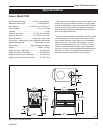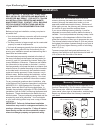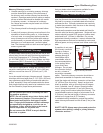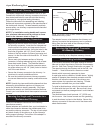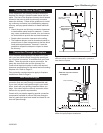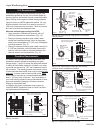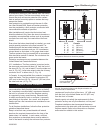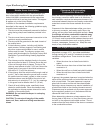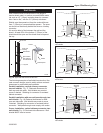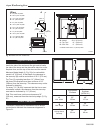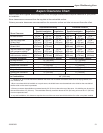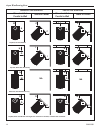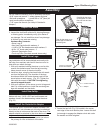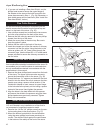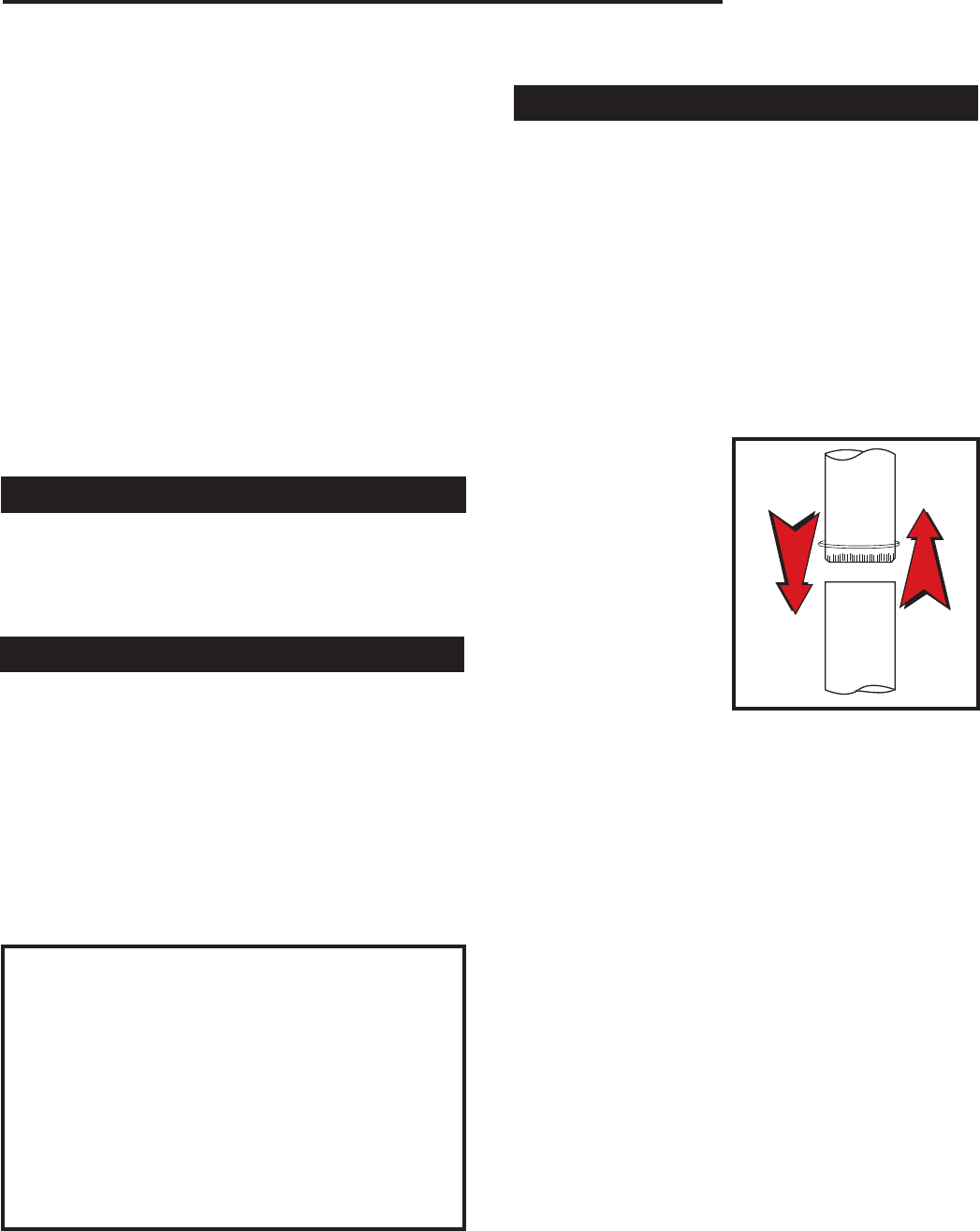
5
Aspen Woodburning Stove
30000369
ST242
Chimney connector
12/13/99 djt
Masonry Chimneys, cont’d.
• Unused openings in an existing masonry chimney
must be sealed with masonry to the thickness of
the chimney wall, and the chimney liner should be
repaired. Openings sealed with pie plates or wallpa-
per are a hazard and should be sealed with mortar
or refractory cement. In the event of a chimney
fire, flames and smoke may be forced out of these
unused thimbles.
• The chimney should be thoroughly cleaned before
use.
• A newly-built masonry chimney must conform to the
standards of local building code, or, in the absence
of a local code, to a recognized national code. Ma-
sonry chimneys must be lined, either with code-ap-
proved masonry or precast refractory tiles, stainless
steel pipe, or a code-approved, “poured-in-place”
liner. The chimney clean-out door must seal tightly to
ensure a good draft.
Prefabricated Chimneys
A prefabricated metal chimney must be one that is test-
ed and listed for use with solid-fuel burning appliances
to the High-Temperature (H.T.) Chimney Standard
UL-103-1985 (2100°F.) for the United States, and High
Temperature (650°C) Standard ULC S-629 for Canada.
Chimney Size
This stove is approved for venting into a masonry chim-
ney with a nominal flue size of 8” x 8” (203 x 203 mm),
and into a round flue size of 8” (203 mm) or 6” (152
mm).
It may be vented into larger chimneys as well. However,
chimneys with liners larger than 8” x 12” (203 x 305 mm)
may experience rapid cooling of smoke and reduction
in draft, especially if they are located outside the home.
Such large chimneys may need to be insulated or have
the flue relined for proper stove performance.
Ask your dealer about components available for con-
necting the stove to a steel chimney liner.
Chimney Connector Guidelines
A chimney connector is the double-wall or single-wall
pipe that connects the stove to the chimney. The chim-
ney itself is a masonry or prefabricated structure that
encloses the flue. Chimney connectors are used only
to make the connection from the stove to the chimney.
They are for interior use only.
Double-wall connectors must be tested and listed for
use with solid-fuel burning appliances. Single-wall con-
nectors should be made of 24 gauge or heavier steel,
and should be 6” (152mm) in diameter. Do not use
galvanized chimney connector; it cannot withstand the
high temperatures that can be reached by smoke and
exhaust gases, and may release toxic fumes under high
heat.
If possible, do not pass
the chimney connector
through a combus-
tible wall or ceiling. If
passage through a
combustible wall is
unavoidable, refer to
the recommendations
in the section follow-
ing on Wall Pass-
throughs. Do not pass
the connector through
an attic, a closet or
any similar concealed
space. The whole chimney connector should be ex-
posed and accessible for inspection and cleaning.
Install the single wall chimney connector not less than
18” (457mm) from the ceiling. Keep it as short and
direct as possible, with no more than two 90 degree
turns. If possible, use 45° elbows. Slope horizontal
runs of connectors upward 1/4” per foot (20mm per
meter) going from the stove toward the chimney. The
recommended maximum length of a horizontal run is
3’ (914mm), and the total length of chimney connector
should be no longer than 8’ (2.5 meters).
In cathedral ceiling installations, extend the prefabri-
cated chimney downward to within 8 feet (2.4m) of the
stove.
SAFETY NOTE: Always wear gloves and protective
eyewear when drilling, cutting or joining chimney
connector sections .
Flue gas
direction
Toward
stove
Fig. 4 Chimney connector.
Do not connect this unit to a chimney flue serv-
ing another appliance.
NOTE: Do not vent this stove into a factory-built
(zero-clearance) fireplace. This stove has not
been tested and listed for that type of installa-
tion. Factory-built fireplaces and their chimneys
are specifically designed as a unit for use as
fireplaces. It may void the listing or be hazard
-
ous to adapt them for any other use.
Do not connect the STOVE to any air distribu
-
tion duct or system.



